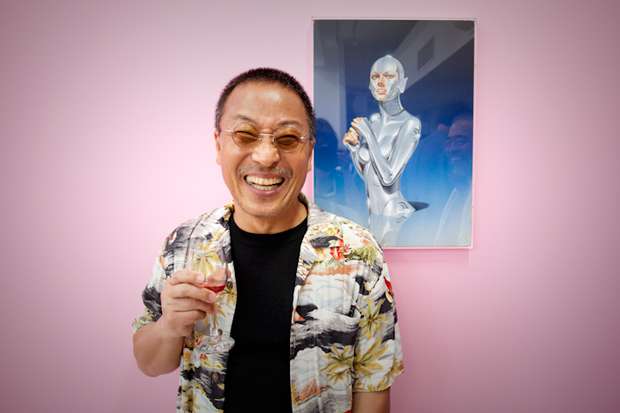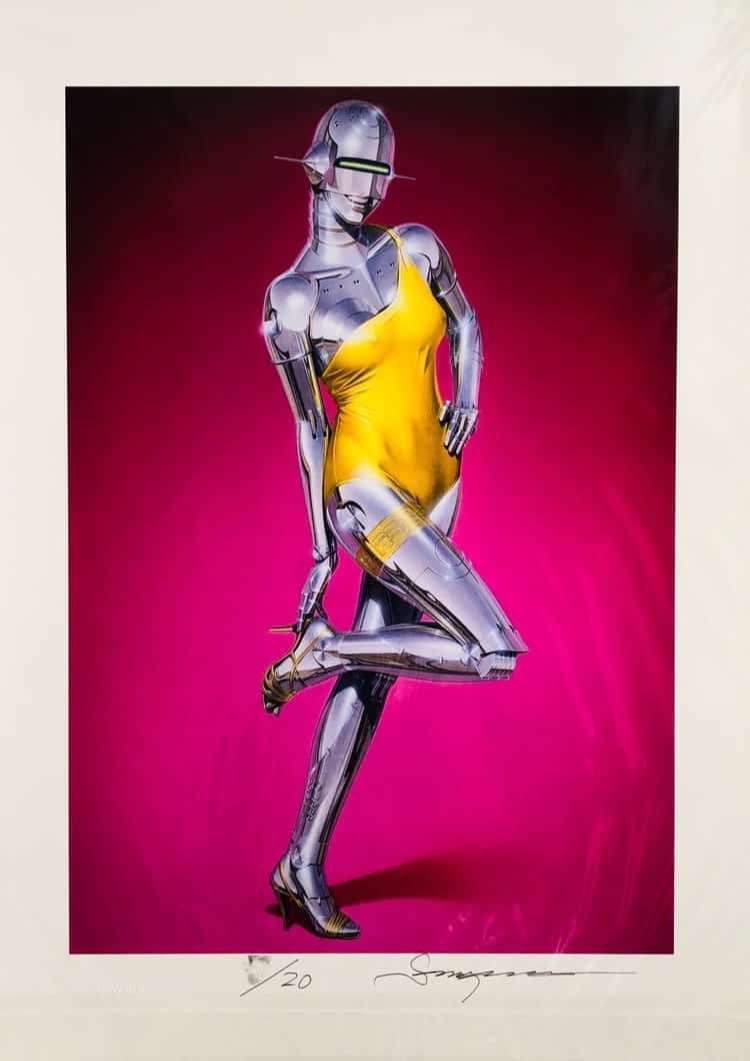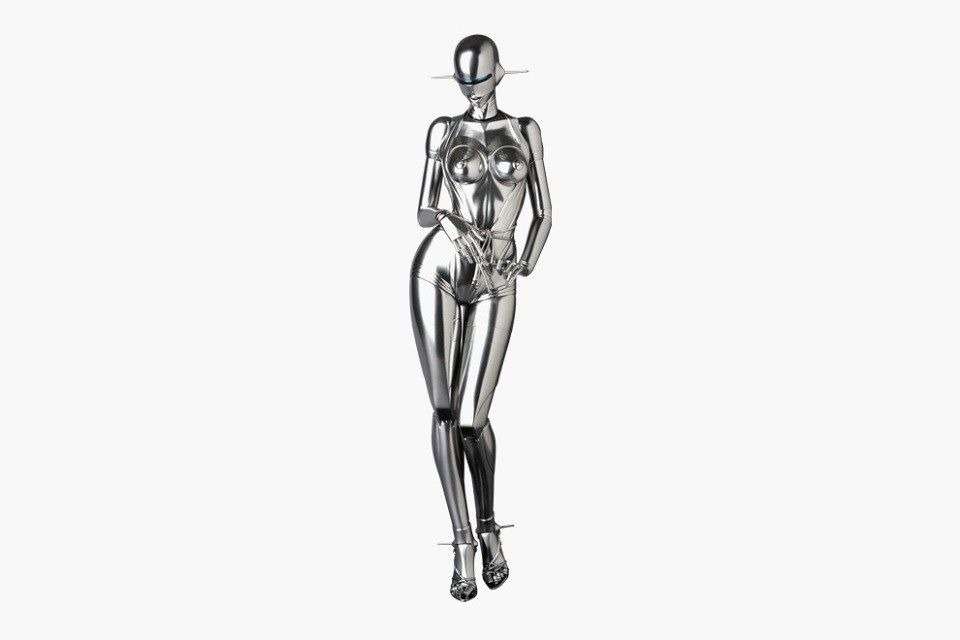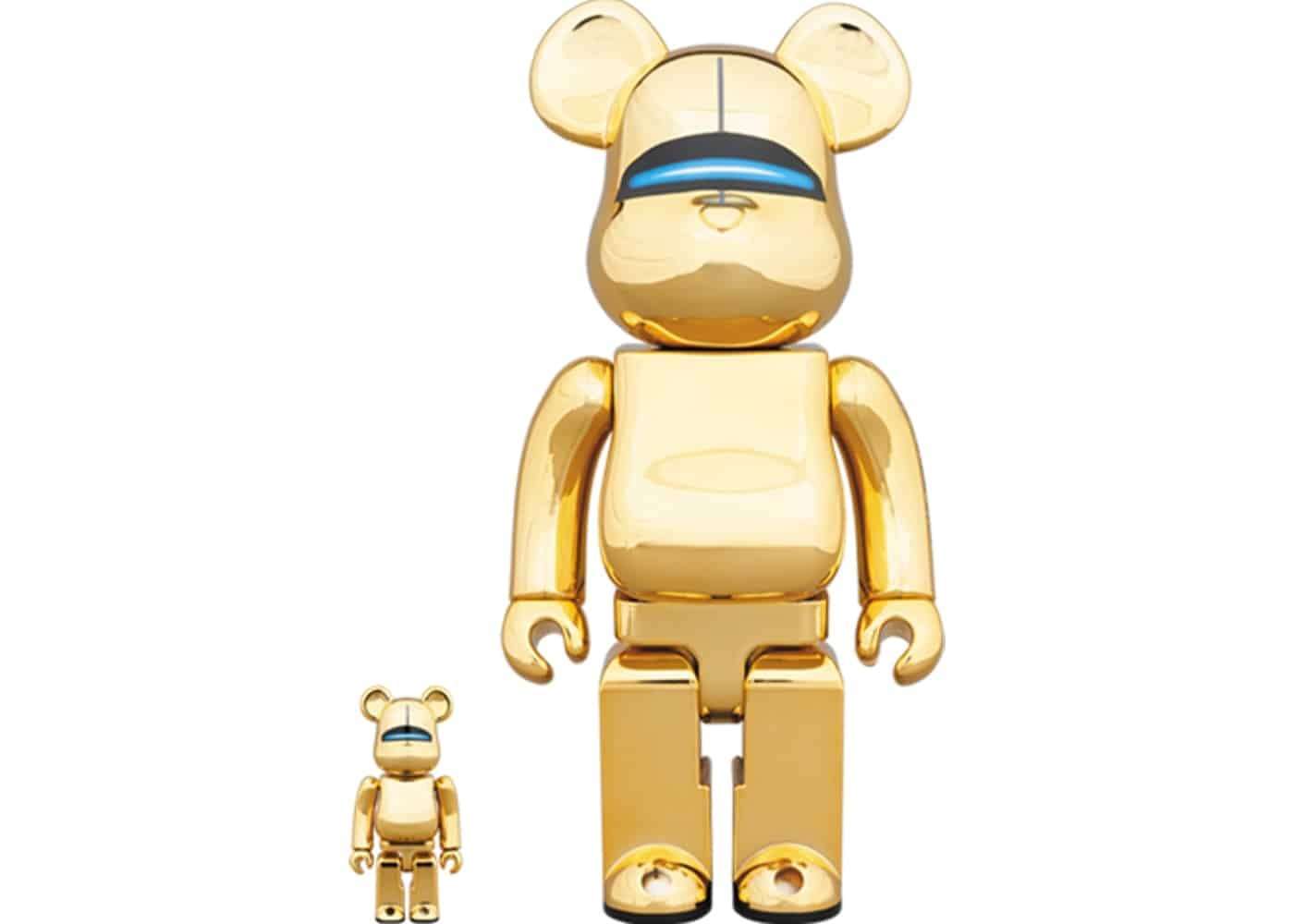
Hajime Sorayama
Buy original Hajime Sorayama artworks from ArtLife, including signed prints from across his career. Learn more about Hajime Sorayama life and work here.
Artwork
Biography
Hajime Sorayama was born in 1947 in the city of Imabari in the Ehime prefecture of Japan. He began drawing Playboy-style pin-ups in high school but initially wasn’t interested in a career in illustration. In fact, after high school, he went to study English and Greek at a Christian university in Japan. Sorayama’s interest in Greece stems from Makoto Oda’s book, Nandemo Mite yaro (“I’ll go and see everything”).
However, the artist faced criticism from teachers and students alike after he founded a student magazine called Pink Journal which was accused of being overtly sexual compared to typical Japanese views at the time. This prompted him to leave and study art at Chuō Gakuin University where he graduated in 1969.
After that, Sorayama worked at an advertising agency before becoming a freelance illustrator. He drew his first erotic robot for a Suntory whiskey ad around 1979-80 based on C-3PO from Star Wars. His technology-focused take on pin-ups became famous around the world when he published his first art book titled Sexy Robot in 1983, followed by Pin-up in 1984. His fembots also appeared in the pages of Penthouse magazine and on the Playboy TV channel.
Sorayama published many more books and also designed trading cards, limited edition prints, and the cover art for Aerosmith’s 2001 album Just Push Play. In addition, he was enlisted to create the initial designs for the Sony AIBO robotic dog — the first “artificially intelligent” mass-market consumer robot for entertainment. This won Japan’s prestigious “Good Design Award, Grand Prize”. These designs now feature in the permanent collections of the Museum of Modern Art and the Smithsonian Institution.
Furthermore, the illustrator worked with Hollywood filmmakers on fantasy and science fiction projects, including George Lucas, for whom he created a spread of fantasy Star Wars pin-ups for a tribute art book. Sorayama has also been commissioned by brands such as Dior, Audi, Nike and DC Comics, and collaborated with other artists like KAWS and manga artist Susumu Matsushita.
Sorayama’s first solo exhibition took place in 1988 at The Seibu Department Store Gallery in Hakodate, Japan. This was followed by his first US exhibition at the Tamara Bane Gallery in Los Angeles in 1994. He has showcased his work around the world, hosting solo exhibitions in countries including Italy, China and Thailand, and appearing in group spectacles in Germany, France, the UK and more.
Sorayama continues to live and work in Japan.
Sorayama chose pin-ups as his subject because they had been “his mania” since his teenage years. “Back then, there was this thing for the Playboy and Penthouse playmates. Now, it’s the girl-next-door, idol type, but in our day, these pin-ups were like goddesses. I guess I could describe it as my own goddess cult,” he explained in an interview. “Even a robot set in a classical theme would be boring. Since I’d always done pin-ups, I thought, ‘why not a robot?’ So, this sexy, female robot was born.”
He describes his distinctive style as “superrealism”. “Art is a kind of tenacity, an insistence upon asserting your own originality,” he once said. “By contrast, superrealism deals with the technical issue of how close one can get to one’s object.” His hyperrealism depicts the sensual metallic features of his fembots, where Sorayama relies on a unique airbrushing technique using a tool he designed himself. This enables him to capture the details of the skin, eyes, lips, hair and other human features in metal.
As well as Sorayama’s signature illustrations suchas Untitled (Yellow Dress), he has created sculptures like Sexy Robot Standing Model and portrayed celebrities including Marilyn Monroe in the iconic robotic form. In an interview with Time Out he insisted that he was simply “following [his] imagination and dream” rather than commenting on celebrity culture.
This creative freedom is at the heart of Sorayama’s work, uninfluenced by engineering details and technological developments. As he said in the same interview: “For me, nothing has ever changed. Since my works have always been based on my imagination, technology is not important.” That said, he added that he will “look forward to meeting with [his] life-sized sexy robot” if that becomes a reality in the future.
Sorayama has always been way ahead of his time with his erotically charged robotic women, his imagination making him an acclaimed and mighty influential artist in his field. As such, it’s no surprise his work continues to be in demand and has sold for tens of thousands of dollars at auction.We have an exclusive collection of original pieces by the renowned artist available to buyers.


